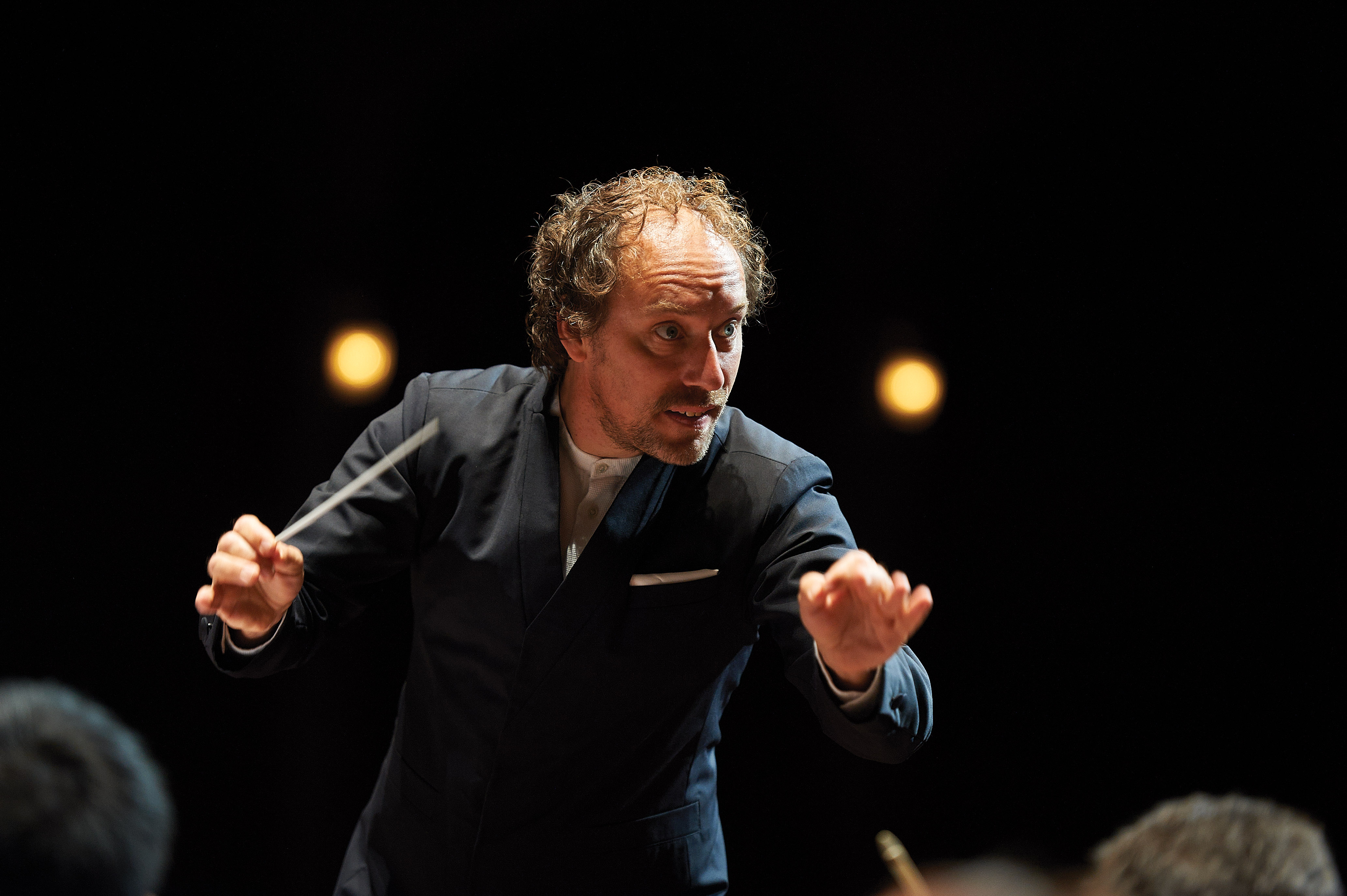When Antonín Dvořák composed his setting of the Stabat Mater, he could not have foreseen the wave of death that would sweep across Europe four decades later in the First World War. Neither could he have imagined the power and resonance that his composition would embody in the 21st century.
In commemoration of the 100th anniversary of the end of the war, the Vancouver Symphony Orchestra will undertake its first-ever performance of Dvořák’s cantata on Nov. 9 and 10 at the Orpheum Theatre.
Under the direction of the symphony’s new musical director Otto Tausk, the performances will feature soprano Colleen Daly, mezzo-soprano Allyson McHardy, tenor Benjamin Butterfield, bass-baritone Giles Tomkins, as well as the UBC University Singers and Choral Union.
A more fitting musical choice is difficult to imagine.
One hundred years ago, at 11 a.m. on Nov. 11, 1918, Germany and the Allies signed the Armistice, ending the First World War. In a conflict that saw the deadly consequences of mass mobilization and modern technology, more than 10 million people died with another 21 million wounded.
Although the world has evolved rapidly from Dvořák’s time, Stabat Mater has endured. The text is derived from a 13th-century Latin hymn that expresses the Virgin Mary’s sorrow at the crucifixion of Jesus. As a church organist, Dvořák was immersed in sacred music when he began working on the cantata in 1876.
But the feeling of mourning and loss that infuses the work was deeply personal. Within a short span of time all three of the composer’s children died, the first of which was his daughter Josefa, who perished when she was just two days old.
Nearly two years later, Dvořák lost his two other children – 11-month-old daughter Ruzena from accidental phosphorous poisoning, and three-year-old son Otakar from smallpox. On Nov. 13, 1877, two months after the death of his son, Dvořák completed the Stabat Mater.
The work speaks to contemporary audiences in a direct way, says Maestro Tausk.
“The first two words (Stabat Mater) say it all. The grief of when you lose a child, that’s what the piece is all about,” he said, pointing out that a generation of mothers lost their children during the First World War.
“The Stabat Mater shows how complicated all the feelings can be when you experience loss. It’s a very dark, sad and intense piece, but at the same time, it has moments of light, moments of hope for the future.”
Since the end of the war, the Vancouver Symphony Orchestra has been integral in the city’s musical and artistic scene, becoming the first of the three largest Canadian orchestras to reach the 100-year mark.
Along with Dvořák’s most celebrated version of the Stabat Mater, this 100th anniversary season will showcase an impressive program of masterpieces, including Felix Mendelssohn’s Violin Concerto in E minor (with renowned violinist Itzhak Perlman), Mozart’s Symphony no. 41 in C major (the “Jupiter”), and Beethoven’s Symphony no. 9, which features the famous Ode to Joy hymn.
This season is also Tausk’s first as the music director of the symphony, and the upcoming performances of the Stabat Mater will be only the fourth time that Tausk has stepped on the stage of the Orpheum in his new role.
The Dutch conductor served as the music director of the Opera Theatre and Tonhalle Orchestra St. Gallen in Switzerland, and has been a guest conductor at the Concertgebouw Orchestra, the Danish National Symphony Orchestra, and the BBC National Orchestra of Wales.
Tausk spoke to The Tyee on the phone after he finished rehearsing with the UBC University Singers and Choral Union at the UBC School of Music. The choirs, composed of undergraduate and graduate students, under the direction of choir director Graeme Langager, sang very well, Tausk says.
Dvořák is regarded as one of the great nationalist Czech composers of the 19th century, although he was long neglected by the German-speaking musical world because of his Czech origins. The composer was born in 1841 in Nelahozeves, a small village 35 kilometres north of Prague, and his father was a butcher and innkeeper.
At age 18, Dvořák left for Prague, where he would stay until he left for America in 1892. After playing in the Provisional Theatre orchestral for nearly a decade, Dvořák devoted his energies to composition. His musical language began to veer away from modern German influence in the 1870s and instead incorporated classical structures and Slavonic folklore.
In 1874, Dvořák became the organist at the Church of St. Vojtěch, playing sacred music on a daily basis until early 1877, just months before losing his second and third child.
His faith helped him cope with loss. But despite its liturgical origins, the music has a universal message that transcends religious beliefs. The text is a journey in mourning, taking listeners to the scene of the crucifixion before returning them to the grief in their own lives, evoking a plea to share in Mary’s sorrows.
“You don’t need to be a religious person in a strict sense to understand the music,” Tausk says. “The music is personal and general at the same time. It’s a communal grief that you can share, and at the same time you can be connected to your own personal life.”
As a member of the UBC Choral Union in the past few years, I have performed with the VSO in monumental pieces like Verdi’s Requiem Mass and Beethoven’s Symphony no. 9, works that capture the pain and struggle of human existence, but which also provide a message of hope and inspiration.
For someone who has not yet gone through such tragic losses, I have been able to take in a morsel of the profound mourning of those around me, simply by being a part of these choral works.
The power of music is that it can draw everyone into a shared experience with those who suffer immensely, regardless of their own experiences. One of Tausk’s primary objectives during the rehearsal at UBC was to help the singers understand the heart of the composer and the music.
“Everyone has their own grief and sadness somewhere. Even in a young person, it’s not hard to find that in yourself when the music is so strong. If you really believe in what you are saying, you don’t really need to have experienced it yourself to be convincing and to appreciate the value of the music.”
For those who do experience loss and mourning, music has been found to have numerous physiological and mental benefits. Research has shown that group singing, for example, can greatly help those who suffer from mental health issues in their road to recovery and can improve the singers’ sense of happiness and well being.
From the first movement of the cantata, the orchestra draws listeners into the pain and grief of the text. The music opens with a sustained F-sharp, a symbol of the cross. From this single note, descending lines emerge, representing the tears of the Virgin Mother. The somber yet passionate introduction gives way to the choir, who set the scene of the lament with the words, Stabat mater dolorosa (“The Mother stood weeping”).
Dvořák doesn’t shy away from expressing the overwhelming magnitude of his emotion. With the exception of the fifth movement, the entire work is in a minor key, which has traditionally been associated with mourning.
“You have to take your time to undergo the whole piece. It’s not something that’s over quickly,” explains Tausk. “But that’s good, especially in our time, when everything is going very fast and quickly. This piece forces you to sit down, shut up, and listen.”
There are also moments of comfort in the music. Tausk likens the lilting 6/8 metre of the fifth movement to a mother rocking a baby. But even the lighthearted quality of this movement is riddled with pain, reflected in the score by a forceful, militaristic passage that seems to come out of nowhere.
“In a way, he wanted to say that the anger about the whole thing never really disappears. It’s still there,” Tausk says. “What Dvořák tells us is that there’s a lot of comfort and truth to be found in music.”
In the end, the power of the work lies not only in its evocation of the universality of human suffering, but also in the resilience of hope and love. ![]()
Read more: Music

















Tyee Commenting Guidelines
Comments that violate guidelines risk being deleted, and violations may result in a temporary or permanent user ban. Maintain the spirit of good conversation to stay in the discussion.
*Please note The Tyee is not a forum for spreading misinformation about COVID-19, denying its existence or minimizing its risk to public health.
Do:
Do not: